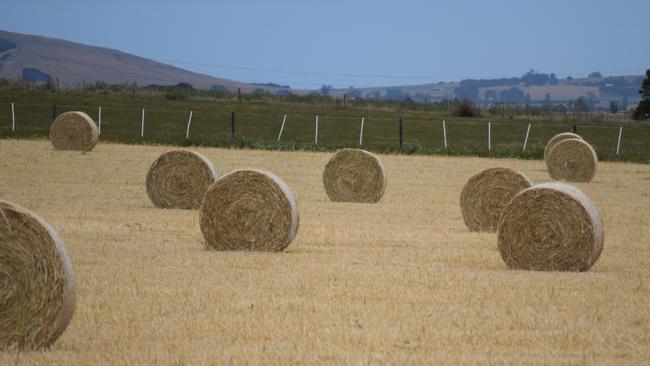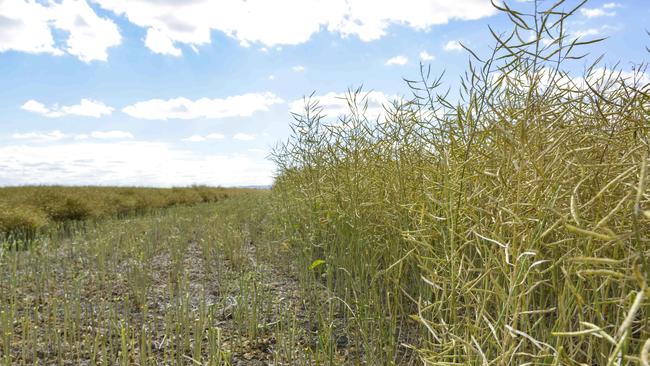Cereal hay a tough sell while tight supplies lift grain prices
Hay exports have hit record levels but will these extraordinary volumes last? Plus find out why lentils and canola are the standouts this week.

Both export and domestic hay markets are steady this week.
While there has been some consistent demand for good quality vetch hay throughout autumn and cereal hay demand to graziers has picked up in the past few weeks, it’s still tough to sell cereal hay.
Oaten and other cereal hay varieties are still three times the volume of the legume hays on offer. Broadacre cereal hay growers have seen the domestic demand swing wildly, according to historical pasture availability for the livestock sectors.
Although quality standards can be challenging, export demand is usually consistent year on year. So when there is a consistent message from exporters to pull back on planted hectares of new-crop hay, it’s a concerning trend for growers.
Given this apparent soft export market outlook the latest export hay volumes are surprising.
According to the government statistician, the latest export statistics show a spike in exports, taking the monthly volumes for April to a record 111,000 tonnes. This is extraordinary, given the average monthly export last year was 83,000 tonnes.
Also, only three of the 29 export plants have full access to the Chinese market, which is a third of total exports.
All three of the other major export hay destinations; Japan, South Korea and Taiwan, increased their imports of Australian oaten hay during April.
Exports from Victoria were 30,000 tonnes and similar to April last year. South Australian exports were 21,000 tonnes, down 20 per cent year on year, but exports from Western Australia were 60,000 tonnes, almost double April last year.
The optimists will take this export data as a sign of an upward trend in export demand and new-crop hay prices, but other factors may be at play.
Anomalies in shipping logistics can mean that containers intended for shipping in one month are delayed to the following month.
These delays have been common in these coronavirus times.
Without access to the Chinese market, exporters face carryover stocks substantially higher than they had intended after their accumulation programs of last spring.
To help clear these stocks and as suggested by the values of hay exported, it’s likely that exporters have lowered their prices to gain increased market.
Cutting of new season’s lucerne hay has begun in the west coast of the US and the first cut is approaching halfway in many states. Uncertain irrigation supplies cast a shadow on the production volumes of our key hay export competitor. Low rainfall on the Sierra Nevada mountains that feeds many reservoirs and the second dry season in a row are limiting irrigation agriculture, particularly in the states of California and Oregon.
The next three months will be critical to determine how US hay production will be affected by the drought and if Australian exporters can maintain their market share in the north Asian markets.
INDIAN TARIFF RUMOURS DRIVE FLUCTUATIONS IN PULSE PRICES
Grain markets bounce between rainfall forecasts, with price movements being more responsive than normal due to the tight stocks of corn, wheat and soyabean.
One market that does not trade neatly in relation to exchange-traded derivatives is the lentil market.
Rumours that the Indian government will combat food inflation and pulse shortages with a reduction of the 30 per cent tariff to 10 per cent have been driving prices.
Current seasonal prices hit a high of $905 a tonne delivered to Melbourne packers in mid-May but have since fallen back to $845 a tonne.
Traders are worried that the rumours may not prove correct and the Australian prices have risen too high relative to the Canadian competition.
According to grain brokers however, new-crop nugget lentils are up $15 at $735 a tonne delivered in Melbourne, and Adelaide bids are $825 a tonne.

Local canola prices have been driven by higher canola prices in Canada.
Last month, canola futures traded above $C1000 a tonne for nearby contracts but it is this week’s new-crop increase to $C760 a tonne which is of more significance to Australian canola growers.
The short-term shortages unique to Canada were behind last month’s rally. This week’s $50-a-tonne increase to the January 2022 futures price is driven by dry conditions on the prairies and higher oilseed prices in the broader markets.
Soyabean futures in the US remain firm, lifting $25 a tonne for the week. Although the US crop is in the ground, hot and dry weather is forecast for the next fortnight and crop conditions are scored well below their average ratings for this time of the season.
Traders are bidding $760 a tonne on a Geelong basis, which is a seasonal high for the 2021-22 crop.
The week-on-week changes to wheat futures saw new-crop prices increase $12 a tonne in Chicago, $9.70 a tonne in Black Sea and $6 a tonne in the Paris-based exchange and on the ASX.
New-crop cash prices for wheat are $5 a tonne higher, with traders bidding Australian Premium White wheat at $319 a tonne on a delivered Geelong basis.
This protracted dry in parts of southeast Australia is impacting new-crop prices.
Over the past two weeks, an additional $10 premium has been built into trader’s wheat bids in the Geelong zone compared to those of the Port Kembla zone.
Australian Standard White wheat prices for nearby delivery to domestic users based in Melbourne and exporters in Geelong remain firm at $330 a tonne.
Barley stocks are falling and traders are finding accumulation slow. BAR1 grade barley is up $3 this week to $278 a tonne, delivered to Melbourne.
MORE
RECORD GRAIN CROP PLANTINGS, LED BY WEST AUSTRALIAN GROWERS
HAY PRICES STAGNATE WHILE WHEAT, BARLEY LIFT ON TIGHT GLOBAL SUPPLIES
GRAZIERS DRIVE HAY DEMAND AS DRY SPELL CONTINUES
E


